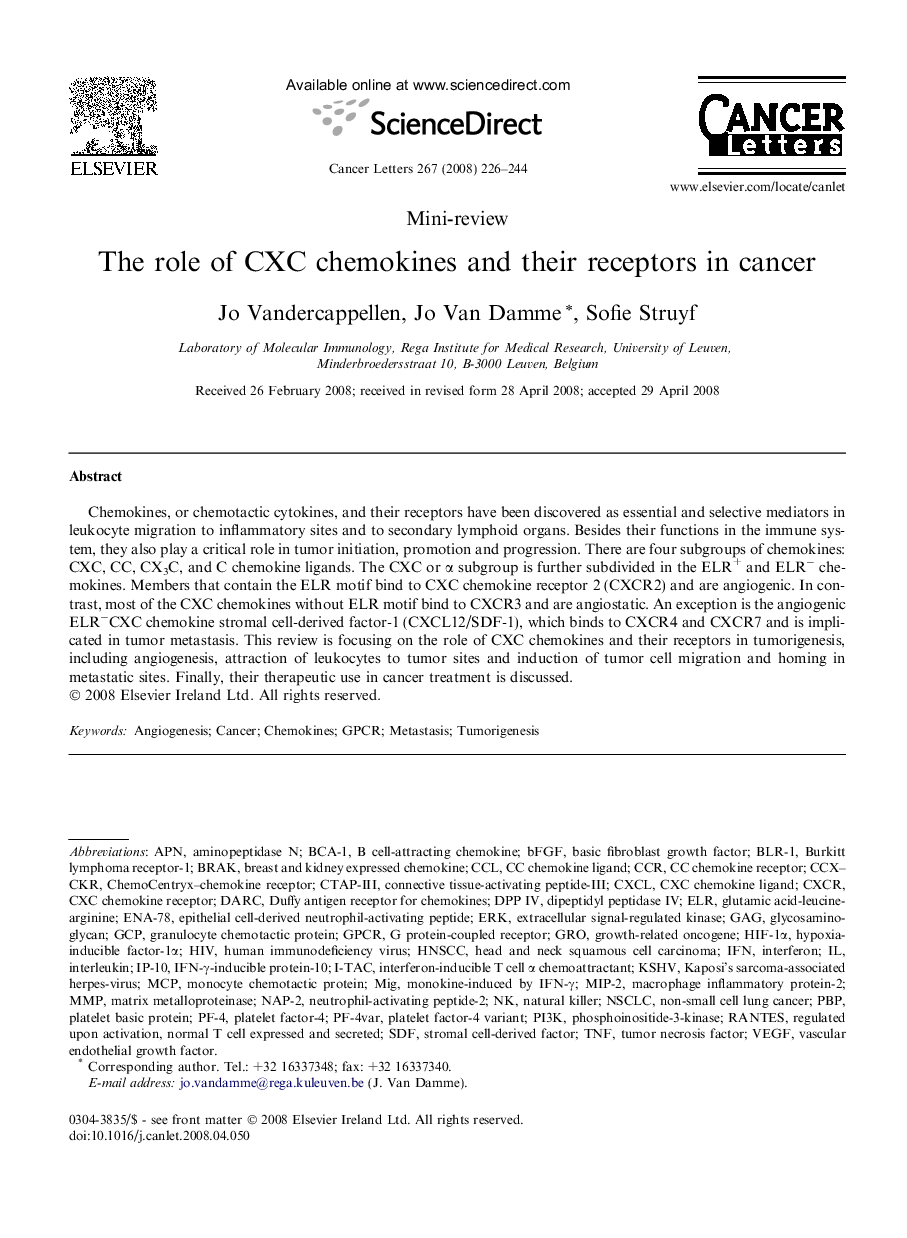| Article ID | Journal | Published Year | Pages | File Type |
|---|---|---|---|---|
| 2114839 | Cancer Letters | 2008 | 19 Pages |
Chemokines, or chemotactic cytokines, and their receptors have been discovered as essential and selective mediators in leukocyte migration to inflammatory sites and to secondary lymphoid organs. Besides their functions in the immune system, they also play a critical role in tumor initiation, promotion and progression. There are four subgroups of chemokines: CXC, CC, CX3C, and C chemokine ligands. The CXC or α subgroup is further subdivided in the ELR+ and ELR− chemokines. Members that contain the ELR motif bind to CXC chemokine receptor 2 (CXCR2) and are angiogenic. In contrast, most of the CXC chemokines without ELR motif bind to CXCR3 and are angiostatic. An exception is the angiogenic ELR−CXC chemokine stromal cell-derived factor-1 (CXCL12/SDF-1), which binds to CXCR4 and CXCR7 and is implicated in tumor metastasis. This review is focusing on the role of CXC chemokines and their receptors in tumorigenesis, including angiogenesis, attraction of leukocytes to tumor sites and induction of tumor cell migration and homing in metastatic sites. Finally, their therapeutic use in cancer treatment is discussed.
